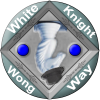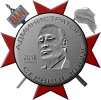http://en.wikipedia.org/wiki/David_HahnWhere would a civilian buy a nuclear bomb?
David Charles Hahn (born October 30, 1976), also called the "Radioactive Boy Scout" or the "Nuclear Boy Scout", is an American who attempted to build a homemade breeder nuclear reactor in 1994, at age 17. A scout in the Boy Scouts of America, Hahn conducted his experiments in secret in a backyard shed at his mother's house in Commerce Township, Michigan. While his reactor never reached critical mass, Hahn attracted the attention of local police who found radioactive materials in the trunk of his car. His mother's property was cleaned up by the Environmental Protection Agency ten months later as a Superfund cleanup site. Hahn attained Eagle Scout rank in the Boy Scouts of America shortly after his reactor was dismantled.[1]
While the incident was not widely publicized initially, it became better known following a 1998 Harper's article by journalist Ken Silverstein. Hahn is also the eponymous subject of Silverstein's 2004 book, The Radioactive Boy Scout.
Creation of the reactor
Hahn is an Eagle Scout who received a merit badge in Atomic Energy and spent years tinkering with basement chemistry which sometimes resulted in small explosions and other mishaps. He was inspired in part by reading The Golden Book of Chemistry Experiments, and tried to collect samples of every element in the periodic table, including the radioactive ones. Hahn diligently amassed this radioactive material by collecting small amounts from household products, such as americium from smoke detectors, thorium from camping lantern mantles, radium from clocks and tritium (as neutron moderator) from gunsights. His "reactor" was a bored-out block of lead, and he used lithium from $1,000 worth of purchased[2] batteries to purify the thorium ash using a Bunsen burner.[1]
Hahn posed as an adult scientist or professor to gain the trust of many professionals in letters, despite the presence of misspellings and obvious errors in his letters to them. Hahn ultimately hoped to create a breeder reactor, using low-level isotopes to transform samples of thorium and uranium into fissionable isotopes.[3]
Although his homemade reactor never achieved critical mass, it ended up emitting dangerous levels of radioactivity, likely well over 1,000 times normal background radiation. Alarmed, Hahn began to dismantle his experiments, but a chance encounter with police led to the discovery of his activities, which triggered a Federal Radiological Emergency Response involving the FBI and the Nuclear Regulatory Commission. On June 26, 1995 the United States Environmental Protection Agency, having designated Hahn's mother's property as a Superfund hazardous materials cleanup site, dismantled the shed and its contents and buried them as low-level radioactive waste in Utah. Hahn refused medical evaluation for radiation exposure.[2]
added: not a bomb but still cool/crazy as hell








